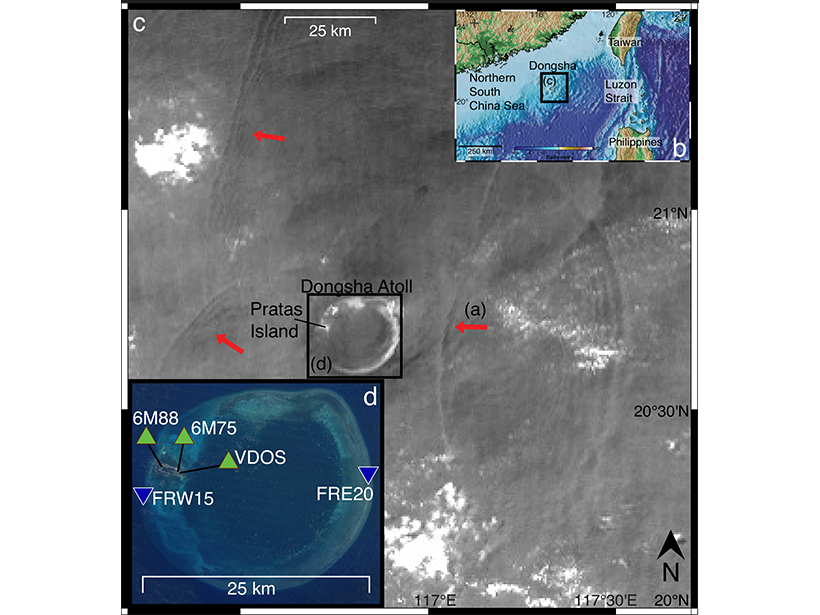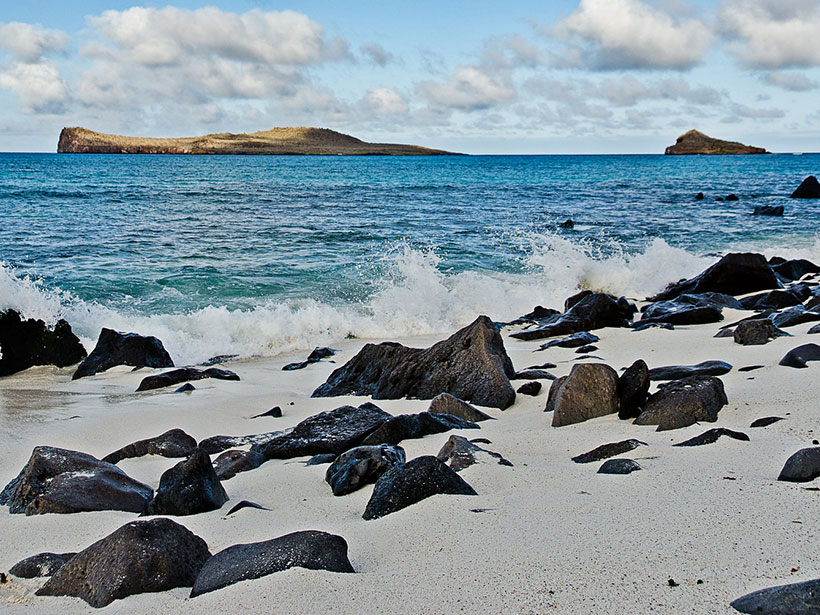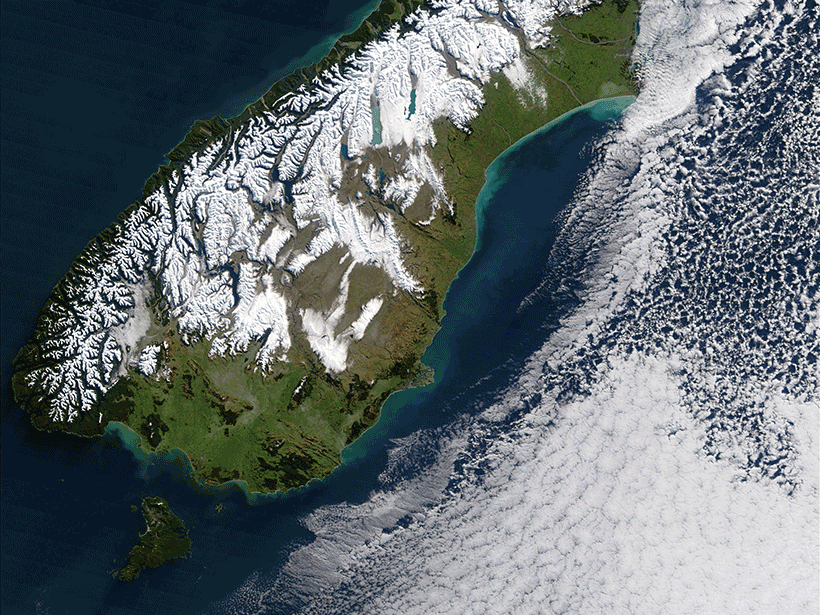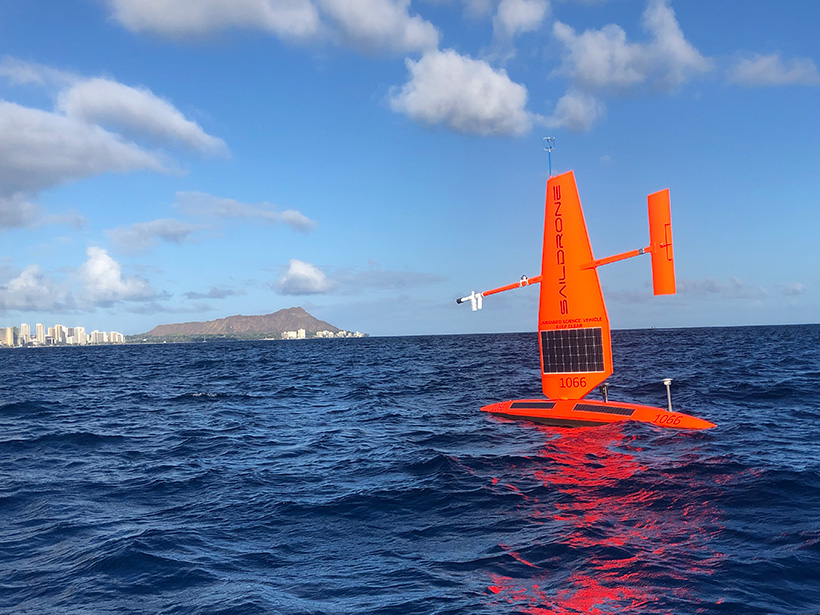Researchers analyzed 36 years of data to understand how atmospheric rivers and other factors drive chronic coastal flooding.
Pacific Ocean
Atoll Seismometer Detection of Solitary Ocean Waves
Seismic recordings from the South China Sea indicate that subtle, daily tilting of shorelines due to passing internal ocean waves can be measured on land, promising new constraints on ocean dynamics.
Tropical Climate Change Is a Puzzle—Could Aerosols Be a Piece?
The eastern tropical Pacific Ocean hasn’t warmed as much as climate change models projected. A new study shows that aerosols in the atmosphere could be responsible.
First Report of Seismicity That Initiated in the Lower Mantle
A 4D back-projection method revealed that aftershocks of the 2015 earthquake beneath the Ogasawara (Bonin) Islands occurred as deep as about 750 kilometers.
Hydrothermal Vents May Add Ancient Carbon to Ocean Waters
Data from a long-distance research cruise provide new insights into carbon cycling in the eastern Pacific and Southern Oceans.
Remote-Controlled Ocean Drones Observe Atmospheric Cold Pools
Novel uncrewed sailing vehicles measured properties of atmospheric cold pools in hard-to-reach regions of the central and eastern tropical Pacific Ocean.
Subduction Initiation May Depend on a Tectonic Plate’s History
New seismic imaging study of the Puysegur Trench aims to solve one of the last major questions in plate tectonics.
Magma Pockets Lie Stacked Beneath Juan de Fuca Ridge
Analysis of new imaging data suggests that vertically stacked magma chambers are short-lived and contribute to eruptions.
Raising Central American Orography Improves Climate Simulation
Elevation of Central American orography significantly reduces the pervasive tropical rainfall bias by blocking the easterlies and consequently warming the northeastern tropical Pacific.










